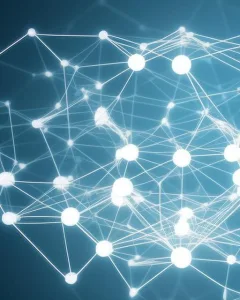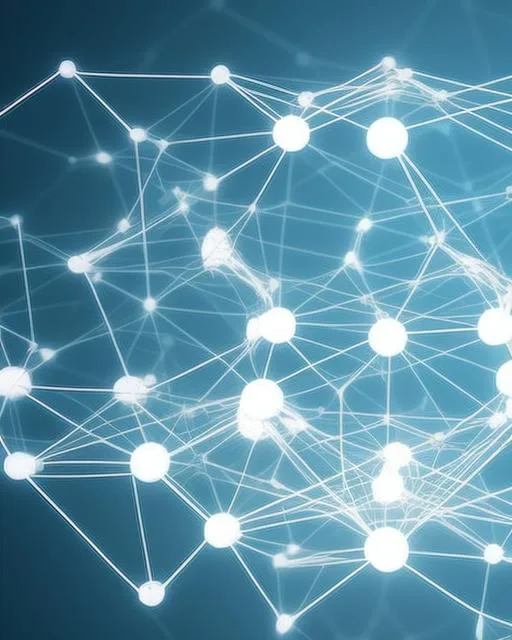The history of neural network research and development is one which goes back longer than most believe. From the early days of perceptrons to today’s deep learning algorithms, this journey has been one filled with innovation and progress. In this article, we’ll explore how neural networks have evolved over the years, from their roots in neuroscience to the present day applications they are used for. We’ll also take a look at what lies ahead for these powerful tools that are revolutionizing machine intelligence. So buckle up – it’s certain to be an enlightening ride!
1. Evolution Of Neural Network Research
 The study of neural networks has been a long and complex journey, with many different theories being explored over the years. While their origin can be traced back to Warren McCulloch and Walter Pitts in 1943, it wasn’t until 1969 that the first successful ‘perceptron’ was achieved by Marvin Minsky and Seymour Papert. Since then there have been further advances in the area of artificial intelligence (AI) research and development, culminating in today’s sophisticated AI systems which are used for everything from natural language processing to facial recognition software.
The study of neural networks has been a long and complex journey, with many different theories being explored over the years. While their origin can be traced back to Warren McCulloch and Walter Pitts in 1943, it wasn’t until 1969 that the first successful ‘perceptron’ was achieved by Marvin Minsky and Seymour Papert. Since then there have been further advances in the area of artificial intelligence (AI) research and development, culminating in today’s sophisticated AI systems which are used for everything from natural language processing to facial recognition software.
It is thought that deep learning algorithms – a type of machine learning algorithm – could potentially take us even further along this evolutionary path. Deep learning uses multiple layers of neurons to process data more efficiently than traditional methods, allowing machines to learn quickly without needing large amounts of training data. This technique has already proven useful in image recognition applications such as self-driving cars or medical diagnosis tools.
As technology continues to develop at an unprecedented rate, we may soon find ourselves relying on increasingly powerful AI systems to make decisions about our lives. It remains to be seen how these systems will impact humanity in both positive and negative ways, but one thing is certain: Neural network research has come a long way since its humble beginnings 80 years ago.
2. Development Of Modern Neural Network Architectures
The development of modern neural network architectures is an exciting part of the history of artificial intelligence. In fact, since 2012 there has been a staggering 300-fold increase in newly published research on this topic – truly remarkable!
This dramatic growth can be attributed to advances in computing power and big data that have made it possible for networks to become more complex and powerful than ever before. This has allowed researchers to design deep learning models with many layers, capable of processing large amounts of data quickly and accurately. Additionally, new technologies such as convolutional neural networks (CNNs) are being used to develop computer vision systems which are able to detect objects within images or videos.
These developments have opened up possibilities for machine learning applications ranging from autonomous vehicles to medical diagnostics. It’s clear that modern neural network architectures are making significant contributions towards advancing our understanding of artificial intelligence technology.
3. Applications Of Neural Networks
The applications of neural networks are virtually limitless. By leveraging their power, researchers have been able to make breakthroughs in fields ranging from healthcare to gaming. Take for example AlphaStar, an AI program developed by DeepMind that was able to defeat the world’s best player at StarCraft II – a feat previously thought impossible. It’s this kind of progress that has made neural networks so popular across industries and has sparked excitement among technologists around the world.
Neural networks can be used to solve complex problems with unparalleled accuracy and efficiency. In healthcare, they’re being used to identify disease markers more accurately than ever before, helping doctors diagnose and treat patients faster and more effectively. They’re also being employed in self-driving cars where they help vehicles recognize obstacles such as pedestrians or animals in order to safely navigate roads. Neural networks are even being utilized in finance, powering autonomous trading systems capable of detecting patterns in stock markets and providing investors with valuable insights into market trends.
From diagnosing diseases to predicting market movements, neural networks have proven themselves invaluable tools for solving some of today’s most challenging problems. With their unprecedented capability for learning, it’s becoming increasingly clear that these powerful technologies will continue to shape our future far beyond what we could imagine today.
4. Prominent Neural Network Researchers

The history of neural network research and development is much like a great symphony, with each researcher contributing their unique sound in order to create something greater than the sum of its parts. Just as an orchestra needs talented musicians and conductors to bring it all together, so too has neural network research had many brilliant minds behind it who have been instrumental in pushing the boundaries of what we thought possible. The fourth act of this grand performance belongs to the prominent neural network researchers who left their mark on history.
Though there are far too many names to list here, some stand out for making particularly significant contributions. Geoffrey Hinton was among the first to advance deep learning by introducing backpropagation training algorithms which helped revolutionize image recognition technology. Yann LeCun refined these methods further when he developed convolutional neural networks used for facial recognition software today. Yoshua Bengio also played a major role in developing AI-related technologies such as natural language processing (NLP) and reinforcement learning that resulted in more intelligent machines being able to interact with humans almost seamlessly.
These individuals were just some of those responsible for helping shape our understanding of artificial intelligence today; without them, modern machine learning would look very different indeed. From groundbreaking new theories explored by scientists at universities around the world, through to use cases across various industries – this journey wouldn’t be where it is without the pioneering efforts of these remarkable people.
5. Challenges In Neural Network Research
Research into neural networks is like a vast, ever-shifting landscape of potential; the possibilities are seemingly endless. But although progress has been made in understanding and utilizing this technology, there still remain considerable challenges that need to be addressed before it can reach its full potential.
One such challenge is finding ways to make artificial neurons more efficient. Currently, these virtual components require large amounts of energy and computing power which limits their utility on a practical level. Furthermore, there’s also the difficulty of how best to construct them so they act as accurately as possible – for example, mimicking the way biological neurons interact with one another.
Other issues arise from being able to teach machines new skills without needing human intervention every time something needs changing or adapting. This requires developing algorithms that allow AI systems to learn and adapt autonomously without outside influence – an area where research is ongoing but not yet perfected.
These difficulties underscore just how complex trying to replicate nature’s design can be when dealing with advanced technologies such as neural networks – it’s clear that significant effort must continue in order for researchers and engineers to unlock their true potential.
6. Benefits Of Neural Network Research
Ironically, the very research that has pushed boundaries and taken us to a place we never thought was possible is often overlooked when discussing the benefits of neural network research. While it may seem counterintuitive, there are countless positive outcomes from this exciting field of study.
From improved accuracy in applications like natural language processing and facial recognition, to enhanced cybersecurity measures, neural networks have opened up numerous new possibilities for our society – ones which could not be achieved without their development. From advancements in medical diagnosis to improvements in stock market predictions, these systems can provide valuable insights and help us make decisions with greater precision than ever before.
It’s clear that neural network research offers an incredible potential for good; however, its true power lies in how it allows us to look into realms previously unknown or too complex for humans alone. By allowing us to explore the depths of machine learning through deep learning algorithms and artificial intelligence-based analytics, researchers are unlocking new opportunities on a daily basis. As such, the future looks incredibly promising for those who choose to pursue further studies within this area of expertise.
7. Future Directions In Neural Network Research
 The world of neural networks research has come a long way, but it’s far from finished. Could there be more benefits to this technology? What new frontiers might we explore in the near future? These are some of the questions that must be asked as we look towards potential directions for neural network research.
The world of neural networks research has come a long way, but it’s far from finished. Could there be more benefits to this technology? What new frontiers might we explore in the near future? These are some of the questions that must be asked as we look towards potential directions for neural network research.
In order to answer these questions, it is important to understand the current state of machine learning-based neural network development and its implications. Neural networks have been used for various purposes including data analysis, facial recognition, and natural language processing with great success. This kind of technology could potentially revolutionize many areas such as healthcare or education if properly harnessed.
However, there also remain numerous open questions when it comes to developing advanced applications using neural networks. For instance, how can they be made easier to use and interpret by non-experts? How can their efficiency be improved without sacrificing accuracy or robustness? Answering such questions may provide additional practical advantages in terms of cost savings and scalability. Additionally, further exploration into topics like reinforcement learning or generative adversarial networks may prove fruitful for providing even better results through AI systems powered by neural networks.
These are just a few examples of potential research avenues which aim to expand upon our present understanding of artificial intelligence and create increasingly powerful tools for problem solving tasks across all industries. In doing so, researchers will continue pushing boundaries while striving to make life easier – and smarter – than ever before!
Conclusion
The field of neural network research and development has come a long way since its inception. Neural networks have been used to develop powerful applications in various fields, such as image recognition and natural language processing. Major advancements have been made by prominent researchers in the field who continue to push the boundaries of what is possible with this technology.
Despite some challenges faced by neural network research, there are many benefits that can be gained from further developing it. For example, better insight into how artificial intelligence works could lead to improved decision-making capabilities for machines or even more efficient algorithms for complex tasks. Plus, deeper understanding of human cognition might also result from exploring neural networks further.
So where does the future lie for neural networks? Can we expect them to become an integral part of our lives like computers and smartphones today? This remains to be seen, but one thing’s certain: further investments into researching and developing this technology will certainly bring us closer to finding out the answer — wouldn’t you agree?
